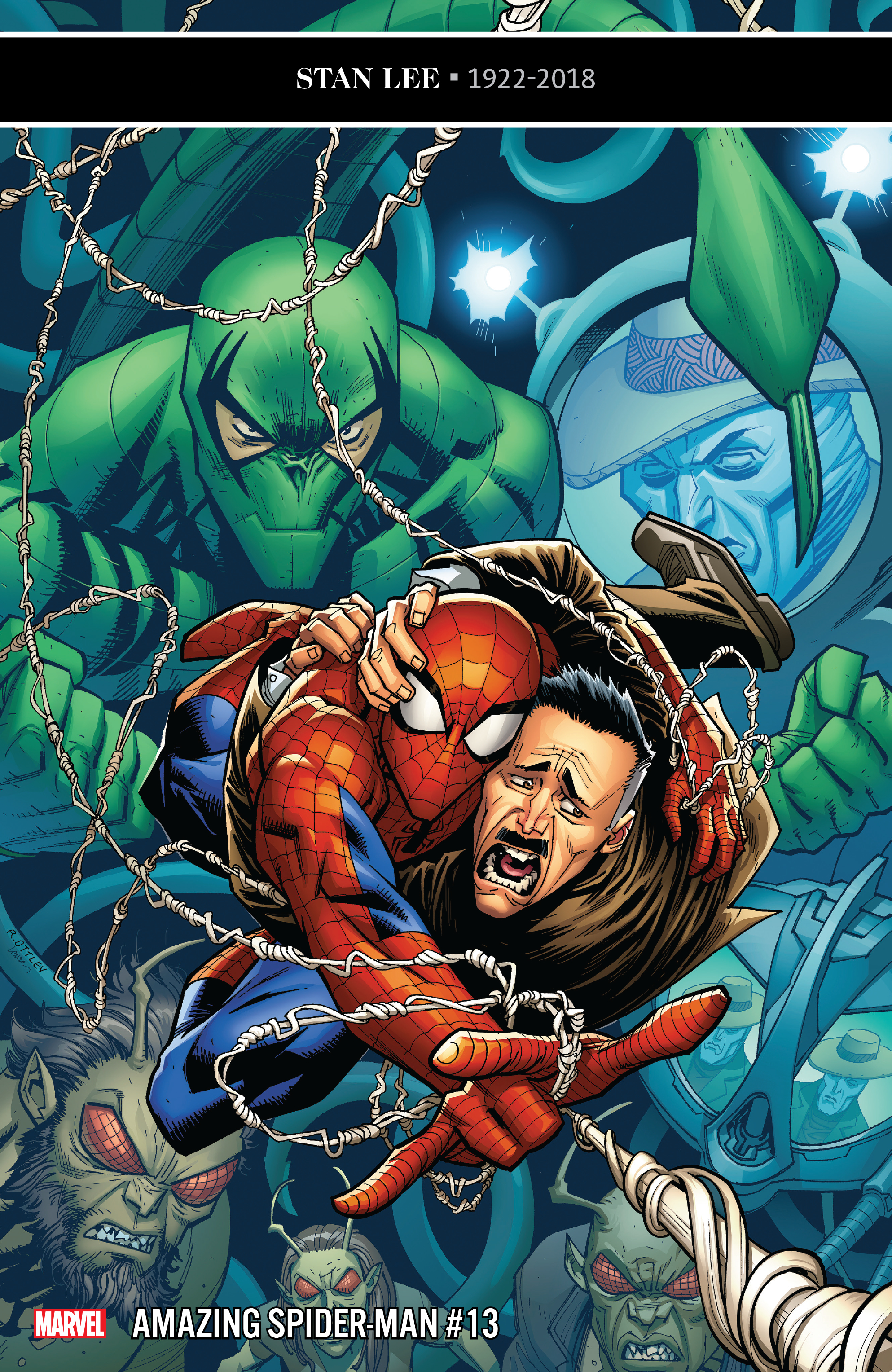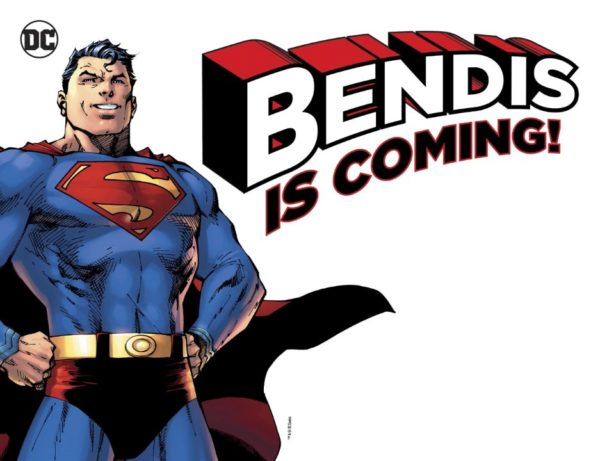The idea behind our Top Comics of the Month feature is to run it halfway into the following month, looking back with some distance. The hope is that readers will use our lists to make informed decisions about books to add or keep on pull lists, etc.
Well, this month it’s been sort of tricky. We started January with a series of lists of our favorite books from last year, plus one featuring our most anticipated books for 2018. Also, the first half of January has been absolutely LOADED with killer books, from a Tom King double punch of Batman and Mister Miracle to the start of a weekly Avengers event to a status quo-changing issue of The Walking Dead to Christopher Priest and Pete Woods taking Justice League in a new, memorable direction. It’s just been great book after great book, but, hey, we haven’t forgotten December! (Ahem, not entirely.)
Our favorite books were dominated by superheroes, which is unusual. Consider: in September we had two DC books and zero Marvel, in October we had one Marvel and zero DC, and in November we had three traditional DC and zero Marvel. That’s an average of two superhero books per month. In December, though, our list features four superhero books plus The Wicked + The Divine, which some might call borderline superhero (we would never, shame!).
Anyway, let’s do this!
5. Catalyst Prime by Lion Forge
First up is Catalyst Prime, a new superhero universe from Lion Forge that started in May with an issue on Free Comic Book Day. In December, the line launched its seventh and final title, rounding out a roster of Noble, Accell, Superb, Incidentals, Astonisher, Kino and Summit (in that order). All of these books feature great creators, creators like writers Amy Chu, Alex De Campi, David Walker, Sheena Howard, Brandon Thomas, and Joe Casey (pulling triple duty), and artists like Pop Mahn (Astonisher), Jan Duursema (Summit), Robert Campanella (Accell), and Roger Robinson (Noble).
A major strength of Catalyst Prime is its narrative unity. Each book has a plot that stems from FCBD's Catalyst Prime: The Event, which makes the universe feel truly shared while also establishing a compelling mystery; basically, The Event left us with many questions that the books now seek to answer. Another strength is the way these titles aspire to realism, both in the demographics their heroes reflect (white, black, Latino, disabled, etc.), as well as in the science on the page. In other words, we’re not going to any different dimensions here. Instead, we're staying grounded in our world. Next, month we’ll take a more detailed look at each title, but for now we’ll just say the future of Catalyst Prime is bright and these are all books you should be reading.
4. The Wicked + The Divine Christmas Annual #1 by Kieron Gillen / Various
Leave it to The Wicked + The Divine—Kieron Gillen and Jamie McKelvie’s mediation on religion and mythos and music—to do a Christmas annual that catches readers up on tons of sex that has happened off panel during its 33 excellent issues. This, obviously makes for a very entertaining read, even if the connection to Christmas stops at the cover.
This book is somewhat of a diversion from the main plot, one you could technically skip, even though it does flesh out (flesh, get it? this issue is about sex!) some of the history and backstory between the reincarnated gods of the pantheon this book is about. This “Christmas” annual tells a few contained stories, anecdotes really, that give breadth and context to our ongoing narrative, which, by the way, just got shook by a whole bunch of revelations in issue #33. Overall, this is a really strong book, impressive given the creators are heading into their end game. The stories here are so well done they feel generous rather than like an excuse to prolong the story, which is no small accomplishment given how exciting the main series has been of late.
3. Batman #37 by Tom King / Clay Mann
I’ve talked about this before, but it’s relevant again: during the DC Rebirth streaming event that announced Tom King as Scott Snyder’s replacement on the publisher’s most popular title, Batman, a moderator (maybe it was Geoff Johns or Dad Didio? maybe Jim Lee?) asked Snyder what he thought of King taking over after his 51-issue all-time great run on the character. During his answer, Snyder grumbled about how one always hopes the next guy up will be Hacky McScripty, but he was also glad to know Batman would be in good hands.
Man, has he ever. King has had a torrid career in comics since breaking out in 2016, penning a trio of modern classics: Omega Men, Vision, and Sheriff of Babylon. His Batman books also dominate sales charts. King has, rightly so, earned what seems like creative carte blanche at DC, and he’s humanized Batman in a way we haven’t quite seen.
In this issue, *SPOILER* Batman and his new fiance, Selina Kyle a.k.a. Catwoman, go on a double date to a carnival with Superman and his wife, Lois Lane. I’ve mentioned this before too (dude, seriously? do you have any original ideas? … um, no, all the creative energy in the comics’ ether is being bogarted by Tom King), but what King does best is use superheroes as a lens through which we must view ourselves. What he wants us to see here are our patterns in love, and man, does he have some fun doing this.
I should also note Clay Mann does some great things with his artwork to illustrate the difference between Superman-Lois Lane and Batman-Selina Kyle, with one of my favorite scenes being Clark and Lois sweetly holding hands as they float through the tunnel of love, while Selina sits on Bruce’s lap while they make out like teenagers. Great stuff all around.
2. Doctor Strange #382 by Donny Cates / Gabriel Hernandez Walta
Three issues in, newly crowned superstar writer Donny Cates has established his run on Doctor Strange as one of Marvel’s best ongoings. Marvel is like a long-dominant sports team going through a rebuilding year right now with the loss of some key creators, specifically Brian Michael Bendis and the stable of artist he works with who will presumably be joining him at DC, including David Marquez. Newcomers to the publisher like Donny Cates, however, are absolutely a reason for Marvel fans to have some hope. Heck, I’d go so far as to say they are entitled to some downright optimism.
Cates’ Doctor Strange really packed a strong emotional punch this issue, when a character that initially seemed like a throwaway gag (Bats, the talking dog the doctor befriended during his new career as a veterinarian) **SPOILER** was killed and used as an offering for Strange to gain mystical favor and get back some of his power in the wake of Loki taking his place as sorcerer supreme.
Cates is going to do great things at Marvel. Hell, after powerhouse indie series like God Country and Redneck that playup the mythos of his home state of Texas (Texas forever, man...I used to live in Austin), Cates has already become the most exciting new writer since Tom King. He’s also been teasing that he’s about to work on a bigger Marvel book in the near future. Here’s hoping it’s Amazing Spider-Man, although my official guess is Wolverine.
1. X-Men Grand Design #1 by Ed Piskor
This auteur comic from Ed Piskor attempts something monumental - streamlining and simplifying more than 50 years of convoluted X-Continuity, and, in its first issue at least, it succeeds wildly, resulting in the most compelling yet easy to read history of Marvel’s mutants I’ve ever encountered. He’s also made a straight up gorgeous comic, one that you can show panels of to your non-nerd friends and likely get back excited and interested reactions.
Paging through this book feels like watching a deliberate and joyful puzzle come together. It’s all really straight forward, which speaks to the presumably massive amount of research Piskor has put into this, and it’s executed so well that it could potentially have an industry-wide impact on the way we preserve superhero continuity, as Piskor and others influenced by him may be asking for years to come to make books like this that can serve as a simplified guide to new readers and old.
I’ve only really seen a project about history of this scope attempted twice, the first time being Marv Wolfman and George Perez’s History of the DC Universe, which immediately followed the landmark Crisis on Infinite Earths and gave readers a broad blueprint as to what had and hadn’t happened after that event cleaned up DC’s convoluted continuity. The second time being Piskor’s own excellent Hip Hop Family Tree, a nonfiction detailing of the history of, what else, hip hop. I can’t wait for the rest of this series, and here’s hoping there will be interest by both Piskor and Marvel in doing similar projects about Spider-Man, The Avengers, Hulk, Iron Man, the Fantastic Four and onward until we run out of heroes. It just makes so much sense. A common barrier for would-be new comics readers is knowing what to start with, and books in this mold would be a great recommendation for clerks to make at comic stores everywhere. Plus, to borrow from Agent Dale Cooper, this is one damn fine comic.
SPECIAL NOTE: As Piskor points out on Twitter, his story in Grand Design is actually more like a remix than an official retelling. This, however, doesn't change how I feel about the potential for his style to streamline continuity. He's super respectful with the intent of the original stories, which to me alleviates any concerns about stepping on the intent of the original creators.











